Te Puia combines Maori culture, our national icon – the kiwi bird, and geothermal activity on the city’s doorstep, 3km from Rotorua centre.
Visit during the day to spot the two brown kiwi in the Kiwi House and see geothermal features including the naturally erupting Pohutu geyser. Watch Maori carvers and weavers at work, and walk onto Rotowhio marae with its carved wharenui (meeting houses) and pataka (storehouse). Cost – from $54 per adult (add on options available). (Discount for New Zealand residents and locals).
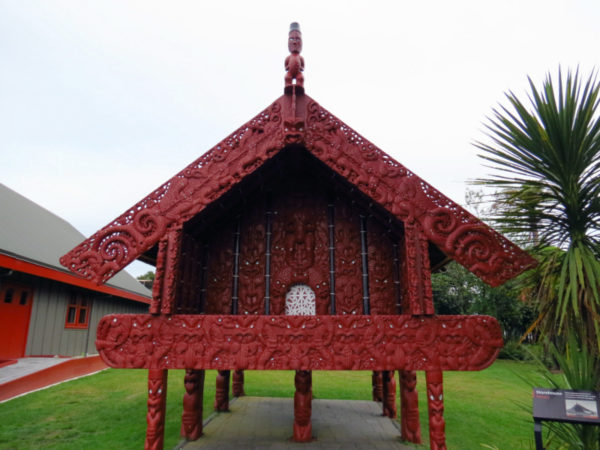
Pataka (elevated storehouse) at Te Puia in Rotorua
The evening experience adds more Maori culture with a powhiri (welcome), cultural performance, and Maori hangi (food cooked the traditional Maori way in an earth oven). Cost – $125 per adult. A combination of the day and evening experiences – $163 per adult.
Guided Tours
Guided day tours are included in the entry fee and run 7 days a week, starting on the hour. I always find guided tours add meaning and value to an experience and Te Puia was no exception.
Geothermal Activity
One thing to note about Te Puia is that you won’t find the vivid colours you may have seen in photos of geothermal activity in Rotorua, that’s Wai-O-Tapu Thermal Wonderland. The Pohutu geyser at Te Puia is impressive though and it naturally erupts once or twice an hour so chances are you will see it shooting for the stars.
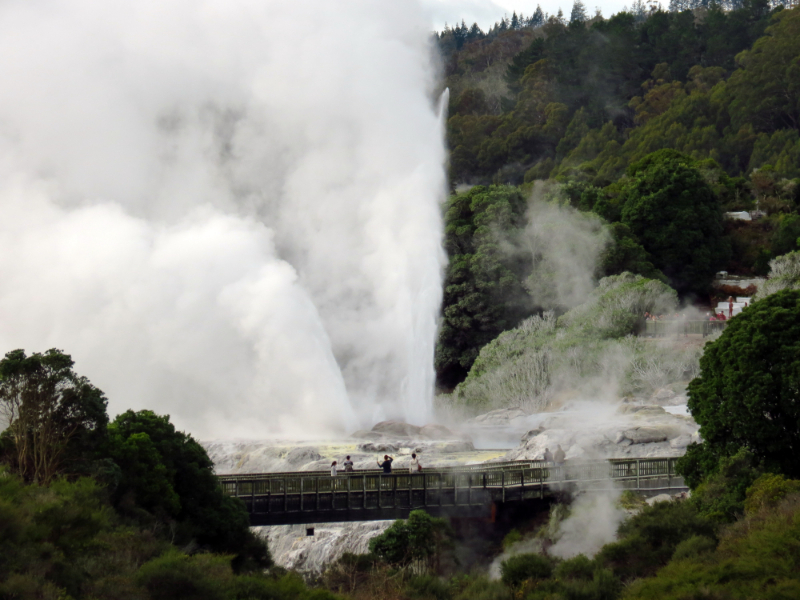
Te Tohu & Pohutu geysers erupting on the Geyser Terrace at Te Puia
The geothermal activity heats up not far from the Kiwi House with the Nga mokai-a-Koko mud pool, and the Geyser Terrace with its three active geysers and silica terraces.
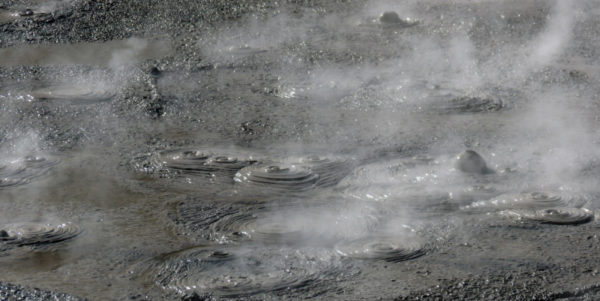
Nga mokai-a-Koko mud pool at Te Puia
The Ngararatuatara track (about 1.2km long) takes you through a valley covered in kanuka and manuka shrubs. You’ll pass small bubbling mud pools, steaming vents, and walk around Lake Waikaukau.
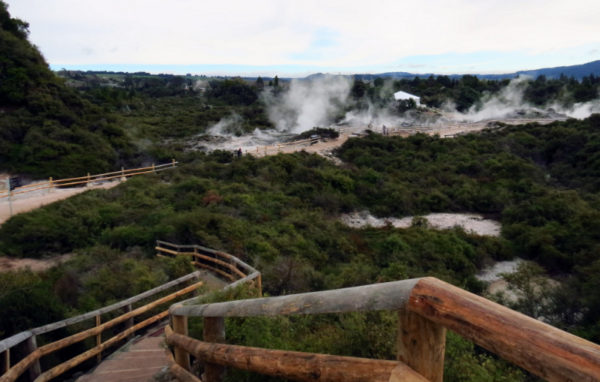
Looking across the geothermal valley
In places you’ll see red coloured clay (kokowai) along the edges of the track. In the past the red clay was burned and crushed into a powder and mixed with shark oil to make red paint. Red was the most common colour used to paint traditional carvings and waka (canoes).
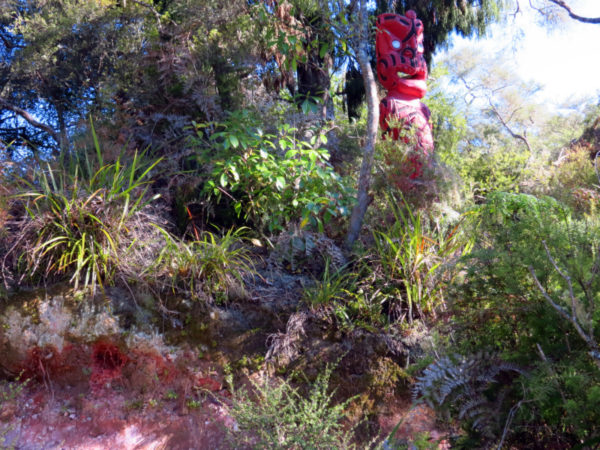
Red clay along the track at Te Puia
Geothermal activity makes Rotorua’s landscape unusual and also creates the ‘distinctive’ smell in the air. It also heats homes and hotels and has always been used by local Maori to cook food.
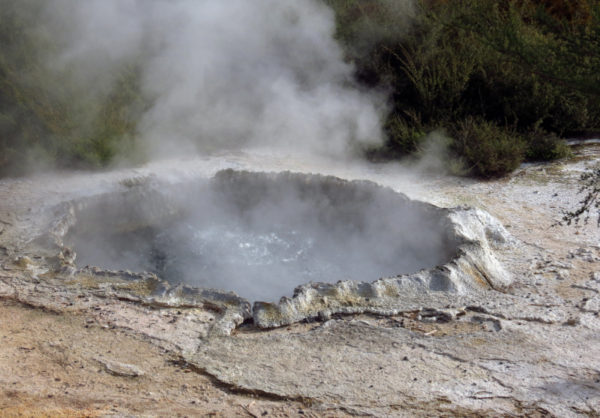
Ngararatuatara cooking pool at Te Puia
Flax baskets (tukohu) holding food can be lowered into the constantly boiling Ngararatuatara cooking pool, the open weave allows water to drain as the basket is lifted out. If you book the evening experience at Te Puia you will be eating meat and vegetables cooked underground in an earth oven.
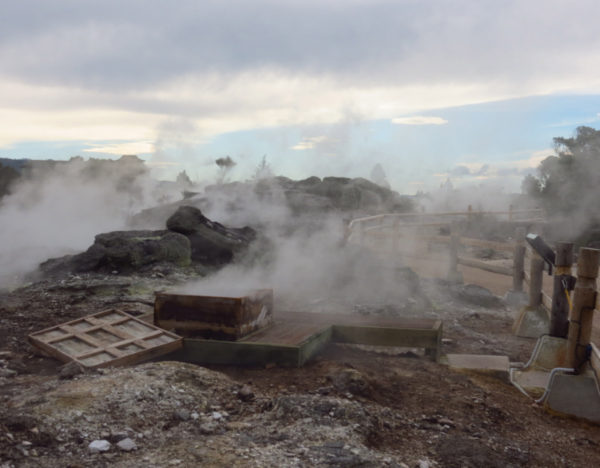
Natural steam vent cooker at Te Puia
Kiwi House
Two brown kiwi live in the Kiwi House at Te Puia – Kiritehere (male) and Marokopa (female). Most kiwi are *nocturnal so the Kiwi House is dark inside during the day so visitors can hopefully see the flightless birds foraging for food. (*The southern brown kiwi can be active day and night and trampers on the Rakiura track in Stewart Island had a nice kiwi surprise during the day.)
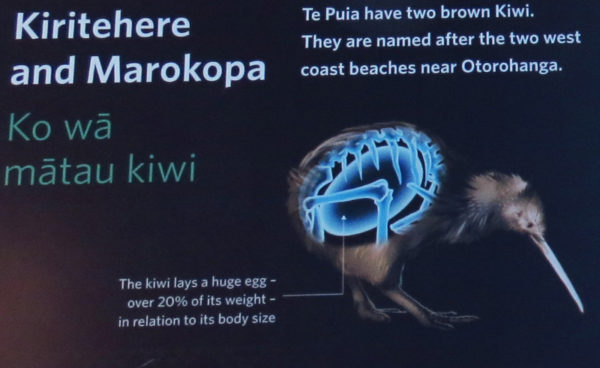
Brown kiwi information
On our last visit to the Kiwi House one of the kiwis was in full view, it was intently poking its beak into a log, maybe in search of a tasty worm. Kiwi have nostrils on the tips of their long beaks and a strong sense of smell that helps them find food in the dark.
It always feels like a privilege when I see a kiwi bird, if they’re in hiding when you visit Te Puia, the website Kiwis for Kiwi has a list of places you can see kiwi in the wild and in captivity.
New Zealand Maori Arts & Craft Institute at Te Puia
Sir Apirana Ngata (1874 – 1950) was instrumental in establishing the Rotorua School of Maori Arts & Craft that opened in 1927 (re-established as New Zealand Maori Arts & Craft Institute). Sir Apirana was a qualified lawyer and politician who worked to improve the lives of Maori people and encouraged the preservation of Maori culture. In particular he believed Maori art and craft were important and that meeting houses and the skills and knowledge used to build them needed to be protected.
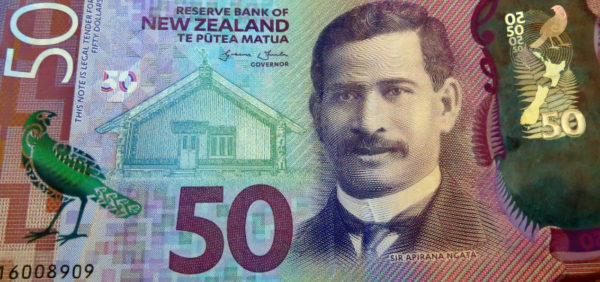
Sir Apirana Ngata is on the NZ $50 note
Apirana Ngata’s dream was that under Maori tuition, skills and cultural knowledge would be passed down the generations. That dream came true at the Institute which today selects five students a year to undertake three years of paid training at Te Wananga Whakiro (the carving school).
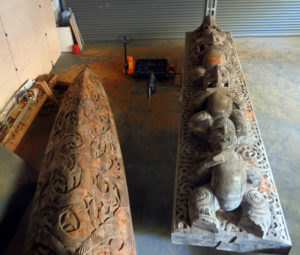
Carving in progress at Te Puia
A brand new complex comprising the carving school (wood, bone and stone), the weaving school, a bronze foundry as well as a gallery and exhibition space opened at Te Puia recently so there is plenty of opportunity to see Maori art and craft in action.
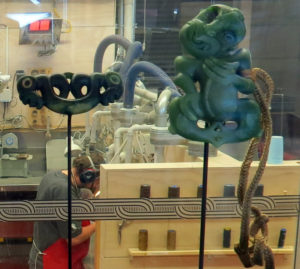
Pounamu pekapeka made by Stacy Gordine and hei-tiki made by Wi Kuki Hewett
There are also two meeting houses (wharenui) on the Rotowhio marae, the marae is unique because visitors are welcome to walk inside the wharenui and take photos. The larger meeting house, Te Aronui-a-rua, was built by students and graduates of Te Puia’s carving school.
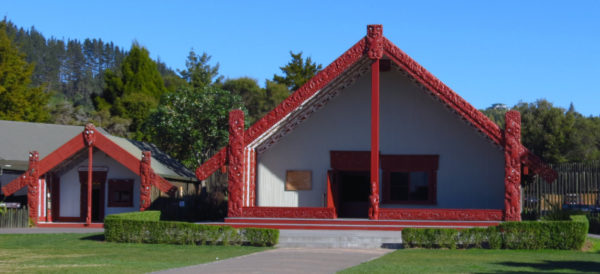
Te Whare Wananga-a-Hatupatu (left), Te Aronui-a-rua (right)
Usually meeting houses are named after a tribal ancestor but Te Aronui-a-rua was named to acknowledge that the carvers came from a variety of Maori tribes. The photos below show some of the interior features – tukutuku panels (woven wall panels), kowhaiwhai (red, black and white patterns on the rafters) and poupou (upright carved slabs).
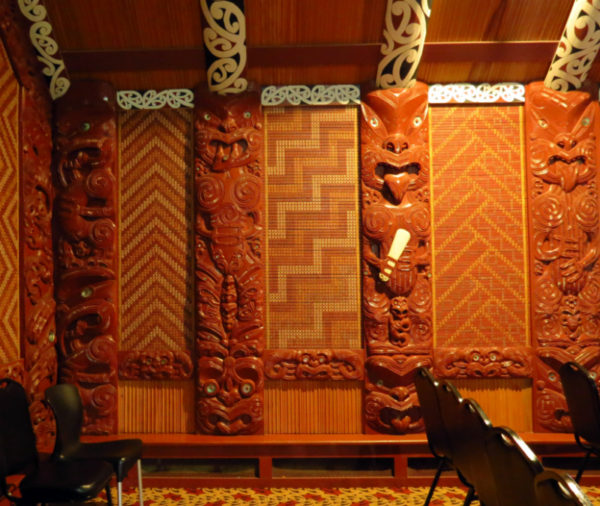
Interior of Te Aronui-a-rua wharenui
It’s time to say haere ra (farewell) and leave you with an overview of what you can see and experience on a day visit to Te Puia.
